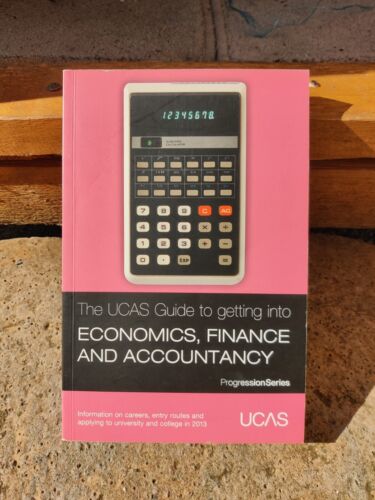Question
Parent Ltd owns 80% of the issued capital of Subs Ltd, which was acquired on 1 July 20X0. The acquisition was paid for by issuing
Parent Ltd owns 80% of the issued capital of Subs Ltd, which was acquired on 1 July 20X0. The acquisition was paid for by issuing 300,000 Parent Ltd shares and $1,000,000 in cash to be paid on 30 June 20X2 to the Subs Ltd shareholders that agreed to sell their shares.
The $1,000,000 cash payment was contingent on Subs generating an average profit after tax of $100,000 per year over the 2 year period. At the date of acquisition, it was probable that the earnings target would be met during the two year period. In fact, Subs earned an average profit of $140,000 during that 2 year period and the $1,000,000 was paid on 30 June 20X2. Parents incremental borrowing rate at 1 July 20X0 was 7%.
On the date of announcing the intended takeover, the shares were trading at $8.50 per share. On 1 July 20X0, the shares were trading at $8.00 per share. The shares were issued to Subs Ltd shareholders on 7 July 20X0 when the shares were trading for $7.80 per share.
The costs associated with the acquisition are as follows:
Share issue costs $100,000
Independent valuers fees 30,000
Solicitors fees 50,000
Allocation of managing directors salary for time spent on the takeover 60,000
At the date of acquisition, the shareholders equity of Subs Ltd comprised:
Contributed equity $1,300,000
Retained earnings 400,000
On that date, three parcels of land (parcels A, B and C) and a building were undervalued on Subs books as Subs accounted for these assets using the cost model. At 1 July 20X0, the building was undervalued by $160,000 and had 10 years of remaining useful life at that date. Each parcel of land was considered to be a separate class of assets. Details and subsequent events and transactions associated with each parcel of land are:
Parcel A was undervalued at 1 July 20X0 by $100,000. Parcel A is still carried at cost by Subs and has not been sold at 30 June 20X5. Parent estimates that at 30 June 20X5, land parcel A has a fair value in excess of its cost of $480,000.
Parcel B was undervalued at 1 July 20X0 by $80,000 and was sold in December 20X3 for a gain before tax of $190,000.
Parcel C was undervalued at 1 July 20X0 by $150,000. During the year ending 30 June 20X2, Subs adopted the revaluation model for land Parcel C and revalued the land upwards by $250,000 at that date. A further revaluation increment of $90,000 was recorded for land parcel C at 30 June 20X5.
Subs Ltd had unrecognised trademarks with an estimated fair value of $140,000 at 1 July 20X0. The trademarks have an indefinite useful life. In addition, Subs Ltd estimated the value of its workforce at $200,000 at that date.
At July 20X0, Subs was in litigation with one of its customers regarding the supply of allegedly defective goods. The claim was for $200,000, however, Subs solicitors estimated the chance of losing the lawsuit at 10%. An external party advised Subs that it would assume the liability for a fee of $40,000. At 30 June 20X5, the litigation with the customer was still ongoing and Subs solicitors estimated the chance of losing the lawsuit at 20%.
For the financial year ending 30 June 20X3, goodwill was written down by $75,000 in the consolidated financial statements because it was impaired. An impairment test of goodwill at 30 June 20X5 indicated that goodwill was impaired by a further $50,000.
The statement of comprehensive income of Subs Ltd for the year ending 30 June 20X5 is:
Operating profit before tax $240,000
Income tax expense 75,000
Operating profit after tax $165,000
Changes in retained earnings of Subs Ltd for the year ending 30 June 20X5 are:
Retained earnings 30/6/X4 $736,000
Operating profit after tax 165,000
Dividend paid 30,000
Dividend proposed 45,000
Retained earnings 30/6/X5 $826,000
At 30 June 20X5, Subs asset revaluation surplus has a balance of $238,000 as a result of revaluing land parcel C. There are no other asset revaluation surpluses.
At the date of acquisition, the fair value of the non-controlling interest in Subs Ltd was $800,000.
Additional information about transactions between Parent Ltd and Subs Ltd:
On 1 July 20X1, Subs Ltd sold a non-current asset to Parent Ltd for $270,000. The asset originally cost $300,000 and had a carrying amount at the date of sale of $210,000. At the date of sale, the asset had a remaining useful life of 10 years.
During the year ending 30 June 20X5, Parent Ltd sold inventory to Subs Ltd for $240,000. The goods were sold at cost plus 20%. At the end of the year, Subs Ltd still has one quarter of these items on hand.
During the year ending 30 June 20X5, Subs Ltd sold inventory to Parent for $80,000. The goods originally cost Subs Ltd $65,000. Parent Ltd has sold 60% of these items by year end.
Subs Ltd paid $5,000 interest to Parent Ltd on an inter-company loan. At 30 June 20X5, the intercompany loan is on the books of Parent and Subs at $100,000.
Sales of inventory from Subs Ltd to Parent Ltd left a before-tax unrealised profit in Parent Ltds inventory at 30 June 20X4 amounting to $20,000.
The tax rate is 30%.
Required:
(a) Prepare the consolidation entries necessary to prepare consolidated financial statements for the year ending 30 June 20X5. Assume that Parent Ltd uses the partial goodwill method when preparing consolidated financial statements.
Step by Step Solution
There are 3 Steps involved in it
Step: 1

Get Instant Access to Expert-Tailored Solutions
See step-by-step solutions with expert insights and AI powered tools for academic success
Step: 2

Step: 3

Ace Your Homework with AI
Get the answers you need in no time with our AI-driven, step-by-step assistance
Get Started


